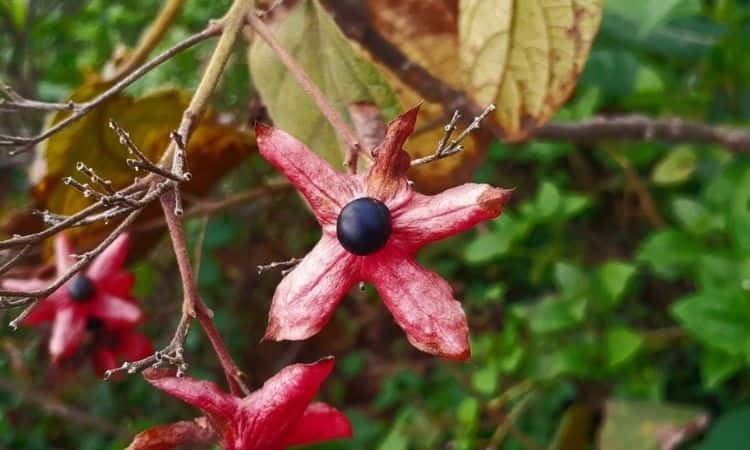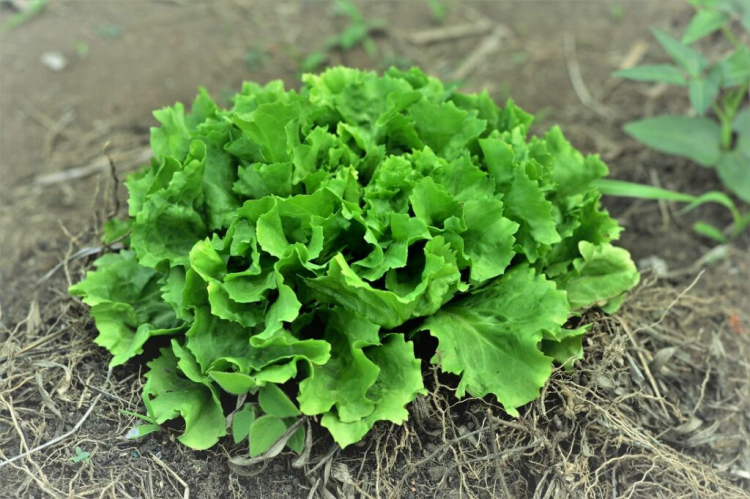Fertilizing Tulips: When, How And With What?
Tulips can bloom anew every year – if they are properly fertilized. We show you what to consider when fertilizing tulips. For a long time, it was believed that onion flowers, such as tulips ( Tulipa ), could do without fertilization. This may be true for the first few years, but at the latest when all reserves from the soil have been used up, the flowering will quickly decline.
Long-lived tulip varieties in particular, which form numerous new flowers every year, should therefore be fertilized regularly so that you can store enough reserve substances in the bulbs for the coming flowering season. Basically, tulips do not place high demands on their location, if you take good care of your darlings, they are guaranteed to be rewarded with a bright sea of flowers.
So that the blooms of your tulips do not diminish, you should support them in their development right from the start with a need-based supply of nutrients. We will explain below when and with what best to fertilize your tulips.
When are tulips fertilized?
Table of Contents
Basically, many tulips also thrive in poor locations with well-drained soils. If you want to do something good for your plant, you can mix some compost under the soil when you plant it in autumn (September / October). This ensures optimal starting conditions right from the start. Depending on the planting time, the flowers will open in the coming spring between the end of March and the beginning of May. Regular fertilization before and during the flowering in spring provides the tulips with optimal support. Simply work a primarily organic fertilizer lightly into the soil every two weeks. It is best to use an organic fertilizer with an organic long-term effect. This promotes active soil life and sustainably improves the soil structure.
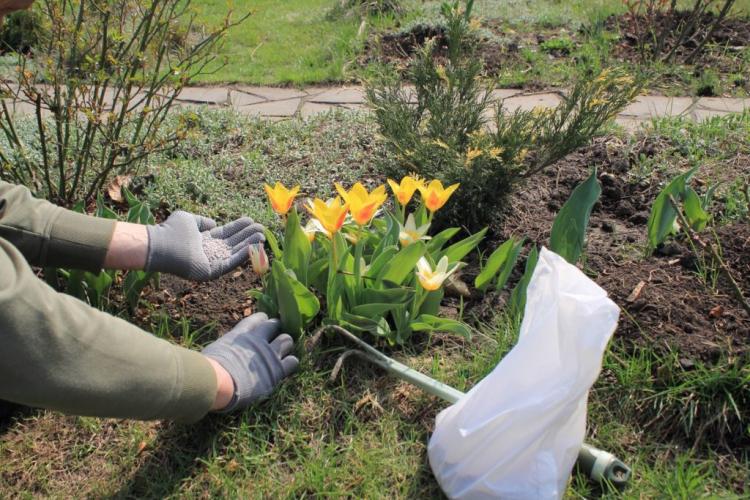
No further fertilization is necessary for the period after flowering. You can give your tulips one last fertilization in autumn (September). The fertilizer granulate is then broken down by microorganisms from the soil and provides the plants with sufficient nutrients for some time before they go into the well-deserved winter break. Alternatively, you can cover your tulips with a layer of compost. This is not only ideal winter protection but also provides sufficient nutrients for new growth in spring after the start of decomposition over the winter months.
When are tulips fertilized?
- Work some compost into the soil when planting
- Work a primarily organic fertilizer into the soil every two weeks before flowering
- Last application of fertilizer in autumn (September)
- If necessary, cover with compost over the winter
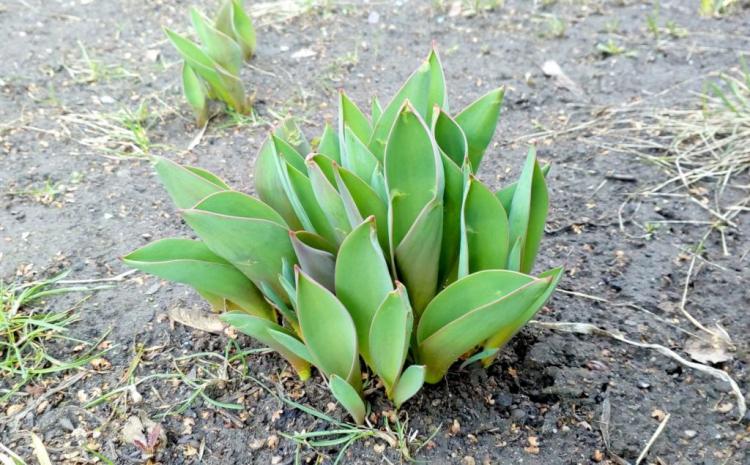
Professional tip: After a few years, the soil can become “tulip-tired”. It is best to move the tulip bulbs to a different location every few years or equip the bed with fresh soil.
What is the best way to fertilize tulips?
A wide variety of materials and products are available for fertilizing your tulips. In the following, we will explain the advantages of using organic fertilizers and what other options there are for supplying your tulips with nutrients.
Primarily fertilize tulips organically: application recommendation
You may even have some natural fertilizers that are suitable for tulips at home. Before planting, it is best to work some ripe compost or rotted horse manure into the soil. However, due to the decomposition via microorganisms, the nutrients are only released relatively slowly.
If you do not have your own compost pile, organic fertilizer with organic long-term effects is an optimal choice. Such a fertilizer is usually better than compost or for fertilizing tulips in pots on the balcony or terrace Damn. In general, there are some advantages in favor of using organic fertilizers with long-term organic effects.
What are the advantages of organic fertilizer with an organic long-term effect?
- Long-term supply of nutrients to your tulips through constant decomposition via microorganisms
- Promotion of active soil life and sustainable improvement of the soil structure
- Particularly gentle on plants, animals, and people thanks to the lack of chemicals
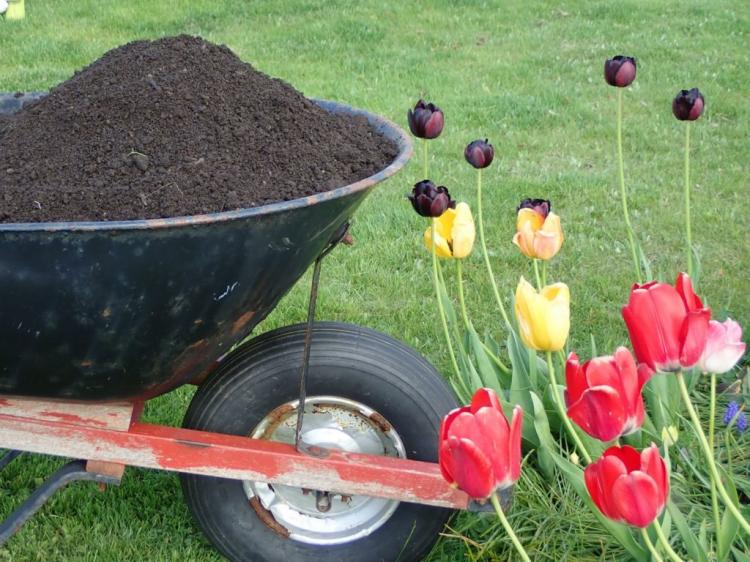
Organic flower fertilizer is mainly made from organic vegetable raw materials. The balanced composition of the fertilizer ensures that your tulips are optimally supplied with nutrients. A high proportion of nitrogen promotes plant growth and leaf formation. Sufficient phosphorus ensures abundant flowering in the further course of the year and an extra potassium content reduces the frost sensitivity of tulips in the bed. To provide your tulips with the correct amount of fertilizer, we have prepared detailed instructions for you as follows.
You might so like: Fertilize Perennials: Everything At The Right Time, Procedure And Fertilizer
Long-term organic fertilization: Instructions & dosage quantities for tulips
- When planting: Work about 100 g / m² (8 heaped tablespoons) of organic flower fertilizer into the topsoil layers.
- Pour freshly placed tulips well so that the granules can loosen.
- In autumn (September) fertilize again about 80 g / m² (6 heaped tablespoons).
Mineral fertilize tulips
If you have forgotten to fertilize in the autumn or spring and the tulips have already started sprouting, many hobby gardeners like to fall back on blue grain, liquid fertilizers, etc. to supply the plant with nutrients at short notice. The advantage of mineral fertilizers is that the nutrients are in pure form and are therefore directly available to the plant. The time-consuming implementation via microorganisms from the soil is therefore no longer necessary.
At the same time, however, the simple solubility of the nutrient salts also increases the risk of over-fertilization. In the worst case, improper use of the fertilizer will even wash out into deeper soil layers, where it can lead to contamination in the groundwater. In contrast to mineral fertilizers, organic fertilizers work much more slowly, but they are much gentler on the environment and promote the development of your tulips more sustainably.
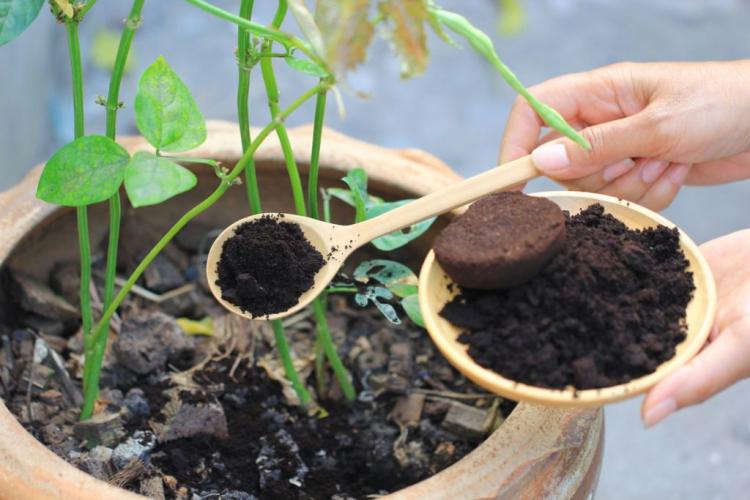
Fertilize tulips with home remedies
A popular home remedy for fertilizing flowers is dried coffee grounds. The actual waste product can easily be incorporated into the topsoil layers. In addition to plenty of nitrogen, coffee grounds also contain phosphorus and potassium. However, you should not fertilize your tulips with coffee grounds too often, as this will lower the pH value of the soil into the acidic range in the long run. If you have your own wood-burning stove, you can also use the resulting wood ash as fertilizer for your tulips. This is very rich in potassium, but also contains lime and other important trace elements. The use of wood ash also helps counteract fungal diseases and rot in the soil.

